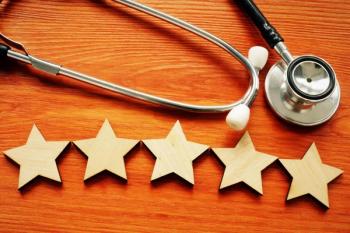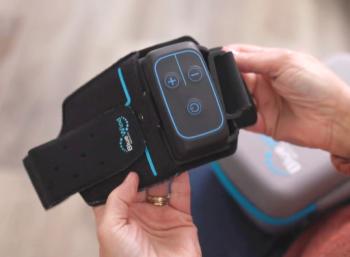
Telemedicine boosts patient engagement, should remain priority for physicians
Consumers don’t think twice about using an ATM or firing up Amazon to buy anything and everything, but engaging with their physicians via telemedicine-two-way video, emails, smartphones, wireless tools-is not yet a natural instinct.
Consumers donât think twice about using an ATM or firing up Amazon to buy anything and everything, but engaging with their physicians via telemedicineâtwo-way video, emails, smartphones, wireless toolsâis not yet a natural instinct.
A HealthMine Survey of 500 consumers who use mobile/Internet-connected health applications finds that 39% still have not heard of
Related:
Many healthcare organizations are trying to change that by developing apps and other technology to push patient engagement through more convenient
âPatient activation and improved understanding of health issues lead to better outcomes, lower costs and an improved health experience for patients and their providers,â says Richard Bakalar, M.D., managing director, KPMG.
He touts remote connectivity between doctor and patient, online follow-up and the use of self-service tools, such as digital trackers and home monitoring devices.
Software Enables Immediate Diagnoses, Treatment Plans
Ray Costantini, MD, CEO of Bright.md, says consumers want care quickly and all in one place, which is why he cofounded the company. Bright.md has developed a software system called SmartExam that enables patients to connect with their physicians when they have a non-emergency health concern.
When patients log in to Bright.md, a service provided by their insurers, they are prompted to answer a set of specially-tailored questions about their condition. Bright.md then develops a preliminary diagnosis and treatment plan, alerts the patientâs physician, and provides information about the patientâs problem to the clinician, who makes a final diagnosis and determines the best care. If a prescription is needed, Bright.md sends it directly to the pharmacy of choice.
Related:
He says the software gives patients a platform for care with their own provider while enabling providers to deliver evidence-based care more quickly. More than 70% of patients, he says, prefer SmartExam, which cuts a visit from 20 minutes down to two, to an in-person visit.
âWhat weâve consistently seen is that patients who have access to SmartExam feel more empowered to seek care when they need it,â Costantini says.
Michael Sherling, MD, chief medical officer and cofounder of Modernizing Medicine, describes his cloud-based solution as asynchronous telemedicine, or âstore and forward.â It allows patients to take photos of their conditionsâprimarily for dermatologic conditions such as rashes and post-operative wounds (other disciplines to follow)âat their convenience for a physician to review later and render an opinion.
The telehealth solution is integrated with the companyâs Electronic Medical Assistant® (EMATM) so that virtual data are captured and stored in one, easily accessible place. With access by both patients and physicians to this proprietary electronic health record, patients can update problems and keep their doctors informed. âCapturing structured data at point of care is how you measure patient status and determine if a treatment works,â Sherling says.
Related:
âPatients receive better access without having to wait two to three months to see a specialist. Telemedicine allows the flexibility many patients require to actively participate in their own health, and at their own convenience,â he says.
Two-Way, Virtual Chats Solve Patient Problems
Eagle Hospital Physicians offers a two-way, audiovisual communication between a doctor and patient in a hospital setting via a cart or robot equipped with videoconferencing technology and a monitor. It brings a patient face-to-face with a physician, who is âbeamed inâ from a remote location. The technology can transmit still images, such as photos, X-rays and CT scans, for interpretation by physiciansâan ideal solution for rural hospitals with limited staff.
Talbot McCormick, M., CEO of Eagle Hospital Physicians, says the model has proved particularly effective for teleneurology. By using Eagleâs teleneurologistsâwhose average response time was 3.5 minutes and average diagnosis and treatment time, 21.8 minutesâINTEGRIS Bass Baptist Health Center in Enid, Okla., saw a 40% decrease in time from entry into the emergency department until hospital admission and one- to 1.2-day decrease in hospital length of stay for stroke patients.
Popular on MedicalEconomics.com:
He says patients find that talking via a robot monitor in their hospital rooms is actually a more personal experience than meeting physicians face to face because clinicians are completely focused on them.
Tandigm Health takes the care delivery system out of the hospital and into the community by providing a high-quality supplement for in-office appointments that integrates accessible care with a personal component.
Further reading:
In a recent pilot program with telehealth company TouchCare, Tandigm Health gave select doctors in its network the opportunity to connect with their patients via smartphones or tablets.
Tandigmâs care team also utilizes TouchCare by enabling high-risk patients to connect with a Tandigm nurse navigator, who is responsible for developing and coordinating a care plan for each patient. Through video chatting, navigators can provide education and self-management support; identify resources; assess patient needs; and coordinate care to prevent hospital readmissions and emergency room visits.
âThrough our program, medical professionals are able to establish a connection with their patient that goes beyond the walls of their doctorâs office and directly into the comfort of a patientâs home,â says Leslie Saltzman, D.O., Tandigm Healthâs medical director, who believes that the sense of comfort and convenience telemedicine provides often is what it takes for patients to stay engaged in their health.
Newsletter
Stay informed and empowered with Medical Economics enewsletter, delivering expert insights, financial strategies, practice management tips and technology trends — tailored for today’s physicians.














